Water Quality InformationWritten By Actual Experts
RSSDrinking Water Supplies Risk Contamination from Toxic Wastewater Ponds
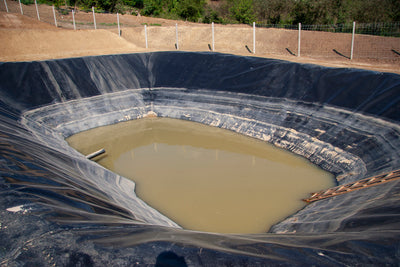
Water Infrastructure and Cybersecurity
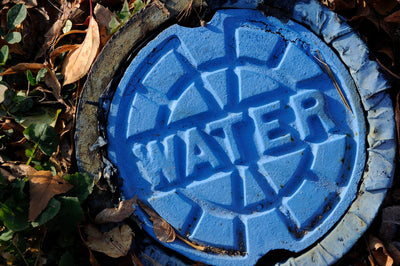
Emily Driehaus | Science Communication Intern
United States infrastructure, including water systems, is increasingly susceptible to cyber attacks meant to steal information, disrupt vital processes or potentially harm the public. Investment in cybersecurity for water infrastructure is necessary to prepare for digital threats and protect the public in the event of an attack.
Cyber Threats to Infrastructure
The recent Colonial Pipeline hack has ignited a national conversation about cybersecurity in critical infrastructure in the United States. This past Tuesday, the head of the Colonial Pipeline, Joseph Blount, told lawmakers that hackers were able to get into the system using a single stolen password. The hack led to days of increased gasoline prices and panic buying, causing fuel shortages in some areas. While these hackers targeted oil infrastructure, water systems are not exempt from the threat of cyber attacks and are at risk of falling victim to hacks that put the security and health of citizens at risk.
Case Study: Oldsmar, Florida
One of the most recent cyber attacks on water infrastructure in the U.S. occurred on February 5, 2021, in Oldsmar, Florida. A hacker was able to access the controls to a water treatment plant and attempted to increase the amount of sodium hydroxide in the water. The sodium hydroxide level, which is used to prevent corrosion of lead pipes, was set to increase from 100 parts per million to 11,100 parts per million before an employee recognized the intrusion and set the level back to normal. No one was harmed and no contaminated water made it out of the treatment plant, but the attack highlights the vulnerability of water infrastructure in the U.S., especially as more systems are connected to the internet and accessible via remote access software.
Protocol for Cybersecurity in Water Systems
The EPA and American Water Works Association have both released guidance for public water systems to encourage preventative action before a cybersecurity threat is realized. Their recommendations include robust IT practices and cybersecurity training for all employees in order to recognize a threat before it becomes a major issue. However, most public water systems in the U.S. serve less than 3,300 people, making strong cybersecurity difficult and costly to achieve.
Government Investment in Cybersecurity
The Drinking Water and Wastewater Infrastructure Act of 2021 includes cybersecurity as part of the bill’s investment in water infrastructure. Introduced by Sen. Tammy Duckworth, the bill would appropriate $25 million for cybersecurity projects in water infrastructure per fiscal year from 2022 through 2026. The Biden administration has endorsed the bill and the inclusion of cybersecurity as a necessary part of infrastructure investment. The bill also has bipartisan support and passed the Senate on April 29, 2021. This allocation of funds highlights the importance of cybersecurity measures for water systems as digital threats continue to evolve with rapidly changing technology.
Our Take
Infrastructure cybersecurity is almost entirely out of the public’s control, making ransomware and cyberattacks even more frightening. The best way to protect yourself and your family from potential attacks is to contact your legislators to advocate for stronger cybersecurity laws and infrastructure improvements.
Other Articles We Think You Might Enjoy:The American Jobs Plan To Allocate $111 Billion To Water Infrastructure Improvements
BPA and Phthalates: Are These Two Endocrine Disruptors in Your Water?
What You Need To Know About NRDC's Latest Nationwide Lead Report
BPA and Phthalates: Are These Two Endocrine Disruptors in Your Water?
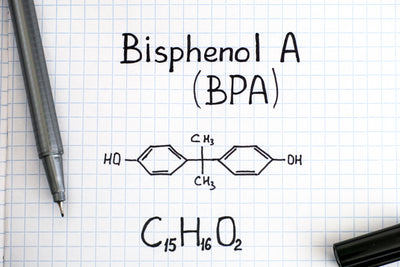
Analies Dyjak, M.A. | Head of Policy and Perspectives
Endocrine Disruptors are a category of contaminants that impact your body's natural ability to regulate hormones. Endocrine disruptors can be found in a variety of different consumer products like plastic containers, food cans, cosmetics, medical supplies, as well as drinking water. This article highlights what you need to know about two of the most well-known endocrine disruptors: Bisphenol A (BPA) and Phthalates.
What is Bisphenol A or BPA?
Bisphenol A or BPA is a chemical used in various consumer goods, including several types of plastics, cash receipts, and canned foods. It’s been used to make polycarbonate plastics and epoxy resins since the 1960’s. BPA is considered an endocrine disruptor because of how it interacts with certain hormones in the body, including estrogen receptors. BPA can be particularly dangerous for pregnant mothers and babies for these very reasons. Exposure to BPA can cause a handful of negative health effects, including; male and female infertility, precocious puberty, hormone-related tumors (breast and prostate cancers), and polycystic ovary syndrome (PCOS). The National Institutes of Health has a full and comprehensive list of these health outcomes.
Is BPA Regulated?
One of the shocking realities of BPA in the United States today is that it’s not entirely banned. Certain states created “disclosure requirements” or “reporting values” when scientists began researching its toxicity. The U.S. Food and Drug Administration banned BPA from baby bottles and sippy cups in 2012 which is the only robust regulation to date. Plastic companies instead decided to voluntarily phase-out BPA to avoid legal challenges. The issue is that companies tend to replace harmful contaminants with equally, if not more dangerous chemicals. Consumer products are pushed to market before meaningful health studies are completed. This is extremely problematic because the public typically has no idea of the health impacts of certain consumer products until it's too late. We wrote an in-depth article about how drinking water contaminants are regulated in the U.S. and why agencies follow this rather backwards protocol.
What Are Phthalates?
Phthalates are chemicals that are added to polyvinyl chloride (PVC) pipes and plastics, certain cosmetics, wood varnishes, and even medical supplies. They’re under that class of endocrine disruptors, so they have a direct impact on hormonal functions, reproductive outcomes, and more. Typically people are exposed to phthalates through food that’s been in contact with plastic containers and wraps, consumer or cosmetics containing phthalates as well as drinking water. Again, the good news is that drinking water is the least problematic in that entire list. Similar to BPA, there’s not a whole lot of testing going on for phthalates in drinking water. One of the reasons is because there are so many different variations. A lot of times plastic producers or other industries that produce phthalates will find a version that works better than the last, replace it, and introduce it into the environment. This is the exact same story that's going on with PFAS or ‘forever chemicals’ in drinking water. And all those different variations, only one type of phthalate is regulated in drinking water. So in short it’s safe to say that we just don’t know the entire story of phthalates in drinking water.
Wildfires and Phthalates:
The increase of destructive wildfires in the past few years has prompted researchers to take a closer look at their impact on drinking water. There is a problematic secondary consequence of these natural disasters aside from the influx of debris, fire fighting chemicals, and other pollutants into drinking water sources. Researchers determined that the PVC pipes leached phthalates into the distribution system after coming in contact with heat from the wildfires. Phthalates leach at a high frequency when they are heated. It’s the same reason why certain types of plastic aren’t microwave safe. This will continue to be problematic as more municipalities replace their lead distribution lines with PVC or other types of plastic pipes.
Do All Water Filters Remove BPA and Phthalates?
No. You'll want to make sure your water filter is able to remove these two endocrine disruptors before purchasing.
Other Articles We Think You Might Enjoy:Endocrine Disruptors 101
How Do Hurricanes Impact Drinking Water?
Water Systems and Temporary Outages
How Do Hurricanes Affect Your Drinking Water?
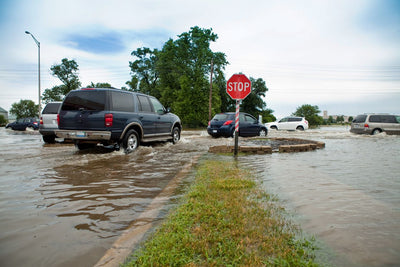
Emily Driehaus | Science Communication Intern
The start of hurricane season not only brings the threat of deadly storms, but also the potential for problems with drinking water infrastructure and systems. Heavy rain and flooding from hurricanes can interfere with both public and private water systems and contaminate water sources, leaving individuals without safe drinking water for days after a hurricane.
Drinking Water Contamination From Stormwater Runoff
Stormwater runoff can contaminate both groundwater and surface water during a hurricane. As stormwater runs into a storm drain or the nearest body of water, it picks up both biological and chemical contaminants from the ground that make their way into the water supply. Impervious surfaces exacerbate this problem, as stormwater cannot penetrate the ground and instead sits on top of these surfaces, contributing to flooding during a hurricane. Some local governments, such as Washington, D.C. and other municipalities surrounding the Chesapeake Bay, are working to combat this issue by replacing impervious surfaces with materials that soak up stormwater and allow it to permeate the ground instead of sitting on top of surfaces gathering contaminants that harm drinking water supply.
Hurricane Flooding and Water Systems
The large influx of water from hurricane rain and flooding can overwhelm both public and private water systems, leading to the overflow of sewers, wells and other parts of water infrastructure. Combined sewer overflows are systems designed to collect stormwater runoff, sewage and other wastewater to be transported to a wastewater treatment plant to be treated before moving to a larger body of water. Hurricane rain and flooding can cause these systems to overflow and untreated water can spill into nearby water sources, potentially contaminating drinking water supply. Wells can also be contaminated with sewage, bacteria and other microorganisms due to hurricane flooding.
Hurricanes and Water Treatment Facilities
Water treatment plants are not immune to the power outages and structural damage caused by hurricane winds. Treatment plants can lose power and infrastructure can be damaged during a hurricane, leaving facilities without the ability to treat water. Equipment and infrastructure in water treatment plants can also be contaminated by runoff and floodwater. The inability of treatment plants to treat water due to power outages leads to boil water notices to ensure people in the affected area are not ingesting biological contaminants through their drinking water.
Case Study: Hurricane Harvey
Hurricane Harvey made landfall in southeast Texas on August 25, 2017, and bombarded the Gulf Coast with heavy rain and wind for days. The Category 4 storm caused $125 million in damage in Texas and Louisiana, including damage to water systems. According to the Texas Commission on Environmental Quality, 61 public drinking water systems and 40 wastewater facilities were declared inoperable and 203 boil water notices were issued during the storm. Flooding also damaged chemical and energy plants in the area, leading to the contamination of surface water and drinking water reservoirs with sewage, wastewater and toxic chemicals. All inoperable facilities, except one wastewater facility, were restored in the cleanup process following the storm. However, tap water was not safe to drink in some communities for months, with boil water notices lasting into December for some areas affected by the storm.
How To Prepare for Water Service Interruptions in a Hurricane
The best way to avoid losing access to clean drinking water is to prepare before the storm arrives. The National Hurricane Survival Initiative recommends beginning preparations as far in advance as possible to avoid the chaos at stores right before a hurricane hits. Buying bottled water is an option for individuals preparing for a hurricane, but prices can increase dramatically right before a storm due to increased demand. Alternatively, individuals can store their own water in the days before a hurricane hits. The NHSI recommends storing water in containers made out of durable materials, such as plastic bottles. Because hurricanes can leave water treatment plants without power and contaminate water sources, individuals should prepare enough water, about a gallon, per person for at least three days.
Other Articles We Think You Might Enjoy:How Do Wildfires Impact Water Quality?
What You Need To Know About Surface Water Pollution
How Are Public and Private Water Systems Susceptible to Temporary Outages?
Is Your City In NRDC's Latest Lead Contamination Report?
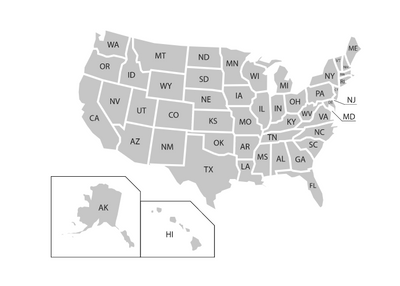
Christina Liu | Scientific Contributor
The Natural Resources Defense Council (NRDC) released a recent analysis of EPA lead data. NRDC found that 186 million people across the United States were exposed to elevated lead levels through their drinking water systems.The EPA, CDC and the American Academy of Pediatrics all recognize that there is no safe level of lead for children. This article breaks down important findings from this study and what they mean for your drinking water.
1. Lead in Drinking Water Is a Significant Issue in Many Parts of the Country
- 186 million people in the United States between January 1, 2018 and December 31, 2020 drank water that exceeded the pediatrician recommended maximum lead level of 1 part per billion (ppb).
- 28 million people were served by drinking water systems that totaled 12,892 lead violations.
- Seven million people drank water that exceeded EPA’s Lead Action Level of 15 ppb.
- The CDC and the American Academy of Pediatrics have stated that there is no safe level of lead for young children. The EPA has also set the maximum contaminant level goal (MCLG) for lead in drinking water at 0 parts per billion because lead can be harmful to human health even at low exposure levels.
2. Do Federal Laws Protect You From Lead Exposure in Drinking Water?
Unfortunately, no. The Lead and Copper Rule (LCR) was first enacted in 1991 and has seen minimal changes since then. It is the only major regulation aimed at protecting the public from lead exposure in drinking water. It does however contain loopholes, exemptions, and regulatory flaws which demonstrate that the LCR does not necessarily prioritize human health. The most obvious and deceptive flaw is the 90th percentile rule, which states that only 90% of samples must meet EPA’s 15 part per billion “Action Level (AL)” threshold. This means that 10% of samples can exceed the AL threshold and still be in compliance with the law.
3. My Water Source is Completely Clean. Do I Still Have To Worry About Lead?
Lead contaminates tap water differently than most pollutants, because lead comes from plumbing - not the water supply. Water leaving the treatment plant can be entirely lead-free but becomes contaminated once it hits older infrastructure. For example, some buildings in older neighborhoods have lead-containing service pipes that connect water mains to the residential plumbing, and plumbing installed before 1986 often used lead-containing solder to join copper pipes. If corrosion control measures fail (what happened in Flint, MI), lead can leach from the pipes into the tap water. This problem is exacerbated when water sits stagnant for several hours before use (e.g. overnight or while resident is at work), because lead concentrations rise as corrosive water sits in the pipes.
Case Study: New York City
New York City provides municipal tap water for more than half the population of New York, through an impressive network of 19 reservoirs and 3 lakes. New York City’s tap water is widely recognized in the water industry as the “Gold Standard” for urban water providers (it’s truly an engineering feat on an unimaginable scale). However, even if the water leaves the reservoirs and water plants lead-free, lead contamination occurs when the water encounters aging pipes and connections that contain lead. In the table below you’ll notice several samples are well over the federal Action Level - some are over 300 times higher than the 15 part per billion threshold.
Table 1. New York City lead levels from 2007 - 2022
4. Does The American Jobs Infrastructure Plan Go Far Enough To Reduce Lead Exposure?
The American Jobs Plan includes $111 billion in funding for water infrastructure. $45 billion of this is being allocated to eliminate ALL lead pipes and service lines. That is a significant promise, but not a lot of money with which to accomplish this. An estimated 6-10 million homes in the U.S. still receive their drinking water from a lead pipe or lead service line. In addition, the process of replacing city-wide distribution lines will be invasive and time-consuming. It involves digging up streets, section by section, across an entire city. Individual homeowners also need to hire a specialist to replace their lead service lines to avoid potential exposure to this known neurotoxin. Also, lead levels increase for the first few months after a service line is replaced. We have an article that goes in depth as to why this is, which you can find here. Unfortunately, if you currently have lead service lines that bring water to your home, while you may experience relief (new pipes) in the future, this won’t be an immediate fix.
What can I do?
-
Get informed. Look up the water quality report in your area. See if your water supplier is one of the ones mentioned in the NRDC study. Information on lead in drinking water, testing methods, and steps you can take to minimize exposure is available from the Safe Drinking Water Hotline or on the EPA’s page: Basic Information about Lead in Drinking Water.
-
Get your water tested for lead. Many cities have free lead testing kits or lead testing services. Check your city’s website or water quality report for information. Please take advantage of these resources if they are available to you.
-
Flush your tap before using water for consumption. If your water has been sitting for over six hours, minimize the potential for lead exposure by flushing your tap for a minimum of 5 minutes before using water for drinking or cooking.
-
Use cold water. Use only cold water for drinking, cooking and making baby formula. Hot tap water is known to cause lead to leach from your home's pipes.
-
Check your Filters. If you are using a filter for your drinking water, please verify that it is certified for lead removal.
How Can Hydroviv Help Me?
Hydroviv is a water filtration company that uses water quality data to optimize water filters for each customer's water. In addition to lead, we use the water quality data for each location to determine what we consider to be major “points of emphasis” that we use to build water filters that are built specifically for municipal water in your area as well as for private wells.
If you’re interested in learning more about water filters that have been optimized for your municipal tap water or private well, or just have questions about water quality in general, feel free to visit www.hydroviv.com, reach out by email (hello@hydroviv.com) or through our live chat. We post water-related news on Twitter, Instagram, and Facebook.
Hydroviv's drinking water filters carry NSF certifications to Standard 42 (aesthetic effects--Chlorine Removal) and Standard 53 (health effects--Lead, VOCs, and PFOA/PFOS removal), and are independently tested to remove hundreds of contaminants.
Other Articles We Think You Might Enjoy:
PFAS and The Safe Drinking Water Act
Disinfection Byproducts in Drinking Water: Toxicity, History, and Policy
Does Boiling My Water Purify It?




